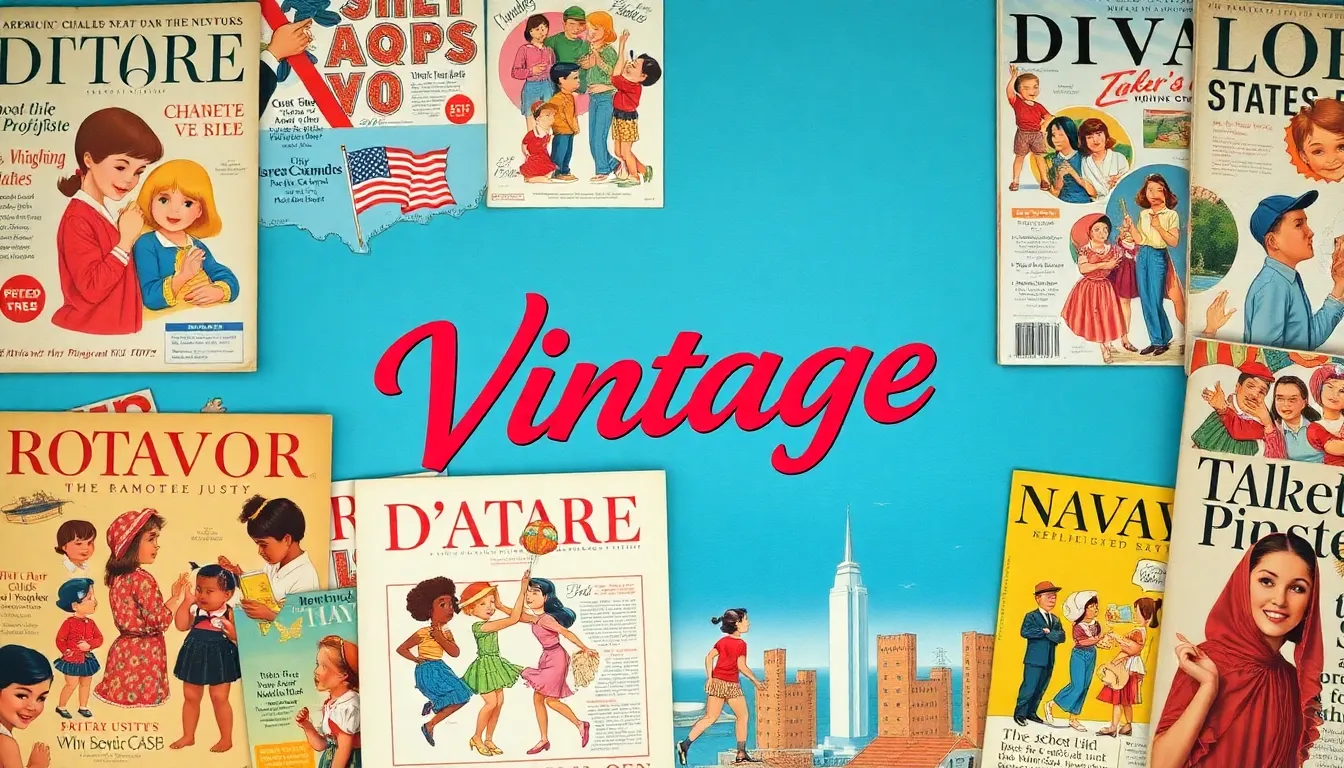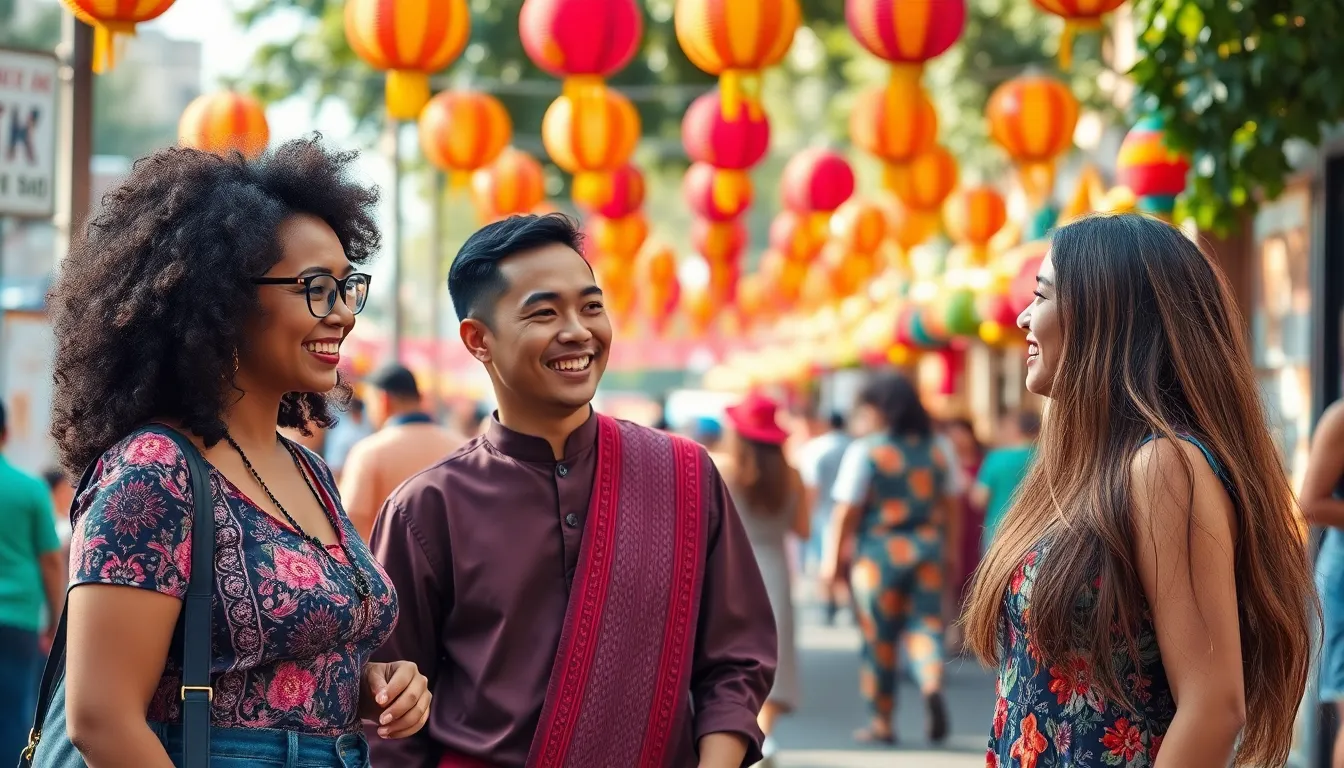In a world bursting with diverse cultures, multicultural magazine narratives serve as vibrant windows into the rich tapestry of human experience. These publications don’t just share stories; they celebrate the quirks, traditions, and flavors that make us uniquely human. Imagine flipping through pages filled with colorful tales that whisk you away to far-off lands, all while sipping your morning coffee—now that’s a journey worth taking!
But let’s be honest, who doesn’t love a good story? Multicultural magazines blend humor, heart, and a dash of sass to keep readers engaged and informed. They challenge stereotypes and spark conversations, proving that our differences are not just interesting—they’re downright delightful. So, buckle up and get ready to explore how these narratives not only entertain but also foster understanding in an increasingly interconnected world.
Table of Contents
ToggleOverview of Multicultural Magazine Narratives
Multicultural magazine narratives serve as powerful tools for representation and inclusion. These publications invite readers to explore various cultures through engaging stories and vibrant visuals. They often feature articles, art, and personal essays that reflect the richness of diverse backgrounds.
Readers can encounter different perspectives on societal issues, traditions, and celebrations. Each article highlights a unique experience, showcasing themes like identity, heritage, and community. Important discussions about cultural appropriation and representation emerge in these narratives, prompting readers to reflect on their understanding of culture.
Through storytelling, multicultural magazines challenge societal norms and stereotypes. They aim to create empathy by presenting authentic voices often marginalized in mainstream media. Diverse narratives foster connections among readers, encouraging dialogue and understanding across cultural divides.
Regular features often include profiles of influential figures from various backgrounds. Profiles provide insights into their contributions and milestones. Additionally, cuisine sections share recipes from different cultures, inviting readers to experience the flavors of the world.
Artwork featured in these magazines typically celebrates cultural aesthetics and expressions. Illustrators and photographers often depict traditional crafts and modern interpretations of cultural symbols. Narratives about these visuals often accompany them, enriching the reader’s experience.
Readers engage not just with articles, but also with the magazine’s community through events and workshops. These initiatives further connect individuals interested in diverse experiences and cultural enrichment. Overall, multicultural magazine narratives play a vital role in fostering a more inclusive society through education and awareness.
Historical Context

Multicultural magazine narratives emerged as essential platforms for sharing diverse voices and experiences. These publications help forge connections and understanding among different cultural communities.
Evolution of Multicultural Magazines
Multicultural magazines began surfacing in the late 20th century, reflecting growing diversity and cultural awareness. Pioneering publications, such as “New York’s Asian-American” and “African American Review,” set the stage for inclusive storytelling. Over decades, an increase in immigration and globalization fueled demand for representation in media. Digital platforms transformed the landscape, making it easier for these narratives to reach wider audiences. Readers now engage with online content that highlights a range of cultures, allowing for expanded dialogue and understanding.
Key Figures in the Movement
Several influential individuals played crucial roles in promoting multicultural narratives. Editors and writers like Amy Tan and bell hooks have brought visibility to underrepresented voices. Their contributions shaped discussions around identity and culture within these publications. Organizations and cultural institutions also supported the movement, providing resources and platforms for diverse storytellers. These key figures helped establish multicultural magazines as vital sources of information, education, and community engagement. Their efforts continue to inspire new generations of writers and readers.
Themes in Multicultural Narratives
Multicultural narratives present a rich tapestry of experiences, showcasing a variety of themes that resonate with readers. By focusing on representation and diversity, these magazines illustrate the importance of including different voices and perspectives.
Representation and Diversity
Magazines that prioritize representation amplify underrepresented voices, allowing for a broader understanding of various cultures. Readers encounter stories that reflect real-life experiences, encouraging empathy and connection. Publications highlight the beauty in unique traditions and customs, enabling readers to explore identity and heritage. This focus fosters a sense of belonging among marginalized groups, reinforcing community ties. Authentic storytelling offers readers insight into personal journeys that might otherwise remain overlooked. Diverse imagery accompanies these narratives, further emphasizing the importance of visibility in a globalized society.
Challenges Faced by Multicultural Magazines
Navigating challenges influences the effectiveness of multicultural magazines. Financial constraints often limit resources, which impacts editorial content and outreach efforts. Competition from mainstream publications also poses significant hurdles, making it difficult for these magazines to attract and maintain readership. Furthermore, societal biases can hinder the acceptance and appreciation of multicultural narratives. Balancing authenticity with commercial viability creates additional complexities for editors and writers. Despite these obstacles, dedication to storytelling serves as a powerful motivator, ensuring that these voices continue to share their experiences.
Impact on Society
Multicultural magazine narratives significantly shape societal perceptions and interactions. They foster understanding and connection among diverse communities.
Influence on Readers
Readers engage with multicultural narratives and often find reflections of their own experiences. They gain insight into cultures different from their own, cultivating empathy. Authentic storytelling inspires curiosity about unique traditions and experiences. By exploring diverse perspectives, readers build a deeper appreciation for cultural diversity. Regularly, these magazines challenge stereotypes, prompting individuals to rethink biases. They often feature personal essays and profiles that resonate on a personal level, making the content relatable and impactful. Overall, readership encourages a more inclusive mindset, fostering dialogue about cultural differences.
Contribution to Cultural Awareness
Cultural awareness expands as multicultural magazines provide rich narratives that highlight various traditions. Through vivid storytelling and visuals, publications reveal the complexities of identity and heritage. Readers access firsthand accounts of cultural experiences, deepening their understanding of global issues. Articles discussing timely topics invite reflection on common societal challenges and aspirations. Many narratives emphasize the importance of representation, motivating readers to advocate for inclusivity. As these stories circulate, broader cultural dialogue emerges, enhancing appreciation for diversity in everyday life. Ultimately, these magazines play a crucial role in educating audiences about the importance of social cohesion and respect for different cultures.
Future of Multicultural Magazine Narratives
The future of multicultural magazine narratives promises exciting developments driven by new trends and technologies. These publications are shifting toward greater inclusivity and diversity, with an emphasis on authentic representation.
Trends and Innovations
Diverse storytelling techniques flourish in multicultural magazines, emphasizing visual elements alongside written content. Increasingly, collaborations with artists and photographers enhance the narrative experience. Themes that explore intersectionality gain traction, allowing voices from various backgrounds to be part of the conversation. Reader engagement strategies evolve, incorporating interactive elements like polls and social media integration. Commitment to sustainability drives some magazines to adopt eco-friendly practices. By prioritizing innovative content, these publications aim to resonate with younger audiences, ensuring cultural narratives remain vibrant and relevant.
The Role of Digital Media
Digital media plays a crucial role in the dissemination of multicultural narratives. Platforms like social media allow magazines to reach global audiences instantly, amplifying diverse voices and stories. Accessibility improves through digital distribution, enabling magazines to engage readers without geographical limitations. Video content expands opportunities for storytelling, capturing the essence of different cultures in compelling formats. Online forums foster community discussions, encouraging dialogue around multiculturalism and representation. By embracing digital innovations, these magazines adapt to changing consumption patterns, enhancing their presence in an increasingly interconnected world.
Multicultural magazine narratives are more than just publications; they’re essential platforms that celebrate diversity and foster understanding. Through engaging storytelling and vibrant visuals, these magazines invite readers to explore different cultures and challenge societal norms.
As they continue to evolve, the commitment to authentic representation remains at the forefront. By addressing themes of identity and community, multicultural magazines play a crucial role in shaping perceptions and encouraging dialogue among diverse groups.
Their impact on cultural awareness is profound, making them vital resources for education and connection. With emerging trends and technologies, the future of these narratives looks bright, promising to resonate with audiences and inspire a deeper appreciation for the richness of human experiences.



